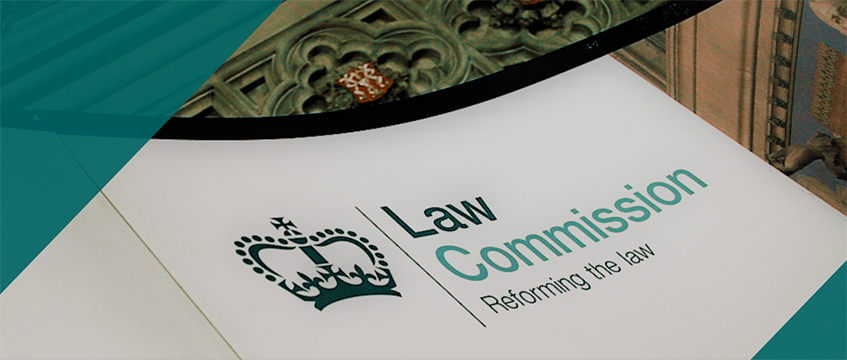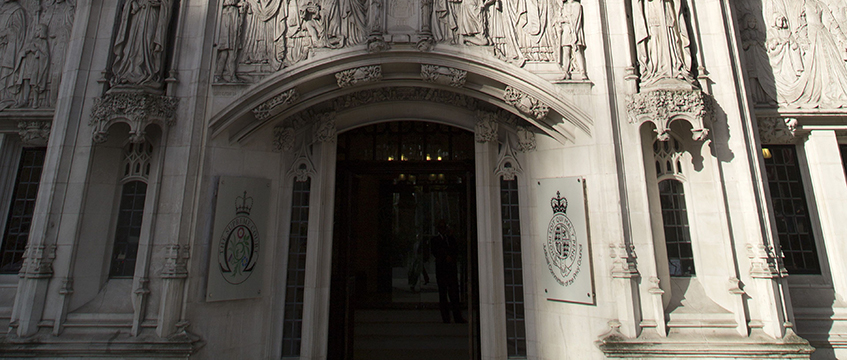JUDGMENT
1. This is a case where the claimant, Mrs Saidi, or her company I think it is, own number
2. In this case the defendants, and when I say the defendants, Mrs Omenaka is joint owner of the property number 13 with her husband, although her husband does not deal with the property and Mrs Omenaka does; he has another occupation even though he is a joint owner. At all events, the defendants wanted to extend or deepen the cellar of the house to make it more useful certainly for letting purposes, and that meant that the joint wall would need to be underpinned and deepened. So Mrs Omenaka got some plans from a builder. The plans appear at exhibit RA1 to Mr Ainsworth’s statement, and they purported to have been prepared or approved by Mr Haynes, a structural engineer.
3. Mrs Omenaka, knowing something about the Party Wall Act, whether from her previous experience or from what she was told by the builder who prepared the quotation for the work, realised she should notify the claimant and she did so on the 12th August 2008, sending the plans and saying what she proposed to do.
4. That was meant to be a notice under the Party Wall Act and in fact the letter which she sent on 12th August enclosing the plans had that reference, “Party Wall Acknowledge of Notice.” That may not be quite the right sort of heading but it certainly was purporting to be a notice under the Act. The letter was sent after a conversation with Mrs Saidi. The letter stated the cellar company, Cellar Vision I think they were called, had done several cellar conversions in the area, including one in the same block; she expected Mrs Saidi would sign and return the Acknowledgement of Notice.
5. Mrs Saidi, whether she was worried about the insurance implications of the proposed work or not, was obviously a little bit concerned about the plans and the effect that those plans if carried out would have upon her own plans for doing something similar in the basement cellar of her own property and so she asked Mr Ainsworth, a surveyor, to advise. He agreed to act as her surveyor and it seems to me that in doing so he was then acting under the Party Wall Act and she was the appointing party, rather than that he was advising her about what she should do in order to start the procedure going, which would be a different function. So as far as I can see he was always acting within the provisions of the Act.
6. He also agreed that the plans looked a little bit inconsistent and he was concerned. So it was felt that clarification was necessary, and indeed there were telephone calls and correspondence between the two sides, Mr Ainsworth to Mrs Omenaka, also to the builder and to Mr Haines, and indeed to an architect. Mr Ainsworth’s concerns were made the greater because it transpired from a telephone call to Mr Haynes that he had said, “I have not designed this. It is nothing to do with me.” Then Mrs Omenaka had the difficulty that the builder, Cellar Vision, decided not to communicate at all. So there was a problem.
7. It seems to me that there was a dispute between the parties in the sense that, unless acceptable plans were produced, Mrs Saidi was not going to agree to the works going ahead. Mrs Omenaka accepts that that was the case, and I can quite understand that she was having difficulty in getting somebody certainly at short notice to produce acceptable plans; it was mooted at one point that perhaps Mr Ainsworth should be the joint surveyor which would have satisfied the requirement under section 10(1)(a) of the Act that the parties should concur in the appointment of one surveyor. That could have been Mr Ainsworth. Indeed eventually Mrs Saidi was happy for Mr Ainsworth to act for both sides.
8. There was a dispute which I do not think I am able to resolve between Mrs Omenaka and Mr Ainsworth as to whether in a phone call between November 08 and January 09 he said, “I have authority to act as a joint surveyor,” or not. She says not, he says, “I did.” It was predicated upon the basis that he could do so but only if there were acceptable plans or designs and, sadly, that never came about.
9. It is clear that earlier this year Mr Ainsworth was asking, “Are we going ahead (and if so produce suitable plans please) or not?” There was also mention of his fees. I know that Mrs Omenaka was not happy about those fees and she refers to the fact that he had quoted some £500 as being the likely cost but I note that from his note it was on the basis that the plans were all right and they clearly were not.
10. In the end Mrs Omenaka sent a notice withdrawing her application so that brought matters to an end, and that was in February I think of this year.
11. The only matter then outstanding was the question of Mr Ainsworth’s charges. I think Mrs Omenaka in argument accepted that he was entitled to charge but she took issue with some of the charges on the basis that he may not have been acting in his capacity as a surveyor but rather answering queries of a general nature. I think Mr Ainsworth would agree that if, for example, there was an enquiry as to whether he would act jointly, that would not be chargeable as such, but he disagrees as to the items that are complained about as to his entitlement to charge.
12. So the only argument is over the fees. It is perhaps just worth checking through the correspondence at exhibit RA 7.3 and onwards to his statement. 7.3 is a letter of the 2nd January 09. Mr Ainsworth notifies Mr and Mrs Omenaka about the cost. He said that was simply a record keeping exercise. Certainly his mention of fees caused Mrs Omenaka some concern as to the amount and she even wrote to the Royal Institute of Chartered Surveyors about that.
13. There was correspondence about that and then on the 13th February (7.9) Mr Ainsworth wrote on behalf of Mrs Saidi saying,
“It is now over six months since your agent served notice under the Party Wall Etc Act in respect of the proposed works,”
and saying that the claimants had
“declined to consent to the work, in fact dissented to them, therefore a deemed dispute arose under the Act and under the provisions of
section 10(1) of the Act I was appointed …. as their Party Wall surveyor….
Despite several exchanges with you, your architect, your contractor and engineer …. I have been unable to solicit any amended or appropriate details of your proposed works. It also appears from other correspondence that you dispute responsibility for and/or the reasonableness of the costs incurred by Sunsaid Property Company in lawfully pursuing the statutory requirement directly as a consequence of the notice served.
Whilst it is not for me or my appointing owner to encourage you to submit suitable details for your work, without which you cannot lawfully carry out that work, my appointing owner does wish to resolve the dispute in respect of the costs incurred singularly as a consequence of the statutory notice served on them.”
Then he says,
“On behalf of Sunsaid Property Company Limited and with their authority as enclosed, I hereby serve you with a written request to appoint a surveyor in writing within the next ten days to determine the statutory dispute. In the absence of written confirmation of such appointment my appointing owner will under the provisions of section 10(4) of the Act make the appointment on your behalf. Thereafter I will liaise with that surveyor to determine responsibility for and the reasonable quantum of the adjoining owner’s costs to date…”
14. So that letter basically says there is a dispute as to the fees as well as about the proposed works but principally because of the stalemate he was instructed to deal with the dispute as to the fees.
15. Then there is a letter of 20th February 2009 from Mrs Omenaka saying, “I have been to Citizens Advice,” and containing further argument and a reply but that does not further the matter.
16. Then on the 26th February there was a letter containing withdrawal of the notice given under the Party Wall Act:
“I wish to withdraw the Party Wall Notice I served on the 12th August 08 to Sunsaid Property. I do not have a contractor to do the cellar conversion yet.”
17. As Mrs Omenaka pointed out, of course, she need not have withdrawn that notice, she could have left the matter open until the guillotine came down at the end of the anniversary of the original notice.
18. Then Mr Ainsworth wrote to her on 28th February in reply saying his fees were £662.40 inclusive of VAT,” and said:
“…. to avoid the additional costs which the appointment of another surveyor and the drawing up of an Award will generate, that appointment will be delayed for a further 7 days only to give you chance to accept the offered agreed termination of proceedings by sending a cheque for £662.50 thereby avoiding further inconvenience to all.”
So there was the opportunity given to pay what was asked for or incur the extra cost of having an award.
19. Then a letter of the 9th March from Mrs Omenaka saying she,
“…. did not sign any consent to your fees which is an expected practice of professionals. I am willing to pay your reasonable costs according to the Party Wall Act. I am, however, not willing to pay for any non-professional activities which could have been performed by a supporting clerical staff.
In the past few years I have instructed surveyors and solicitors and they have always had me sign an agreement specifying what their terms are etc and that I agree to pay their fees. Party Wall Act must be governed by such good practice so that doubt is avoided.
You should have made it very clear that you charged for phone calls, especially as this is not the usual practice of surveyors. I have been billed for an inquiry call I made and which my architect made also without prior warning.”
20. That is one of the objections raised, that there are no written contract terms or a list of terms as between Mr Ainsworth and Mrs Omenaka. Had Mr Ainsworth been directly engaged by her or acted jointly, that might well have been a criticism, but, since he is only acting for Mrs Saidi, I do not think that is something which can be raised as a complaint in these proceedings.
21. At all events, no surveyor was appointed by Mrs Omenaka to deal with this dispute and section 10(4) of the Act says this:
“If either party to the dispute
(a) ….
(b) neglects to appoint a surveyor under section 1(b) for a period of ten days beginning with the day on which the other party served a request on him,
the other party may make the appointment on his behalf,”
which is what Mr Ainsworth warned might happen in his letter just referred to.
22. So it was that Mrs Saidi delegated the task to Mr Ainsworth to appoint Mr Kilpin as the other surveyor. There was also Mr Scanlon who was appointed and agreed upon as the umpire, in case Mr Kilpin and Mr Ainsworth disagreed about the amount of dispute. As it happened, the amount was agreed between them. There was no need for Mr Scanlon’s services to be called upon and the award was made in a sum rather larger than before because of the cost of carrying out the procedure for the award.
23. That award was made on the 20th March 2009 and, since there has been no request for that to be looked at again within the 14 day period allowed for; the award is now final unless this Court (strictly it may not be this Court) can say that it is otherwise invalid. As Mr Ainsworth says, it may be a matter for judicial review rather than this Court but, be that as it may, I will consider the objections made as to invalidity because none can be made under the award itself because no objection has been made within 14 days.
24. It follows from that that, even if there are items charged by Mr Ainsworth which would otherwise not be chargeable that is no longer something which can be complained of given the expiry of the period allowed for.
25. I note that Mr Ainsworth did say in the fact finding exercise carried out this morning, that the charges are for professional services and they are not of the sort of enquiry nature or non-chargeable nature that Mrs Omenaka talks of.
26. Be that as it may, that is water under the bridge now.
27. The defendants’ case is this. Firstly, the notice that they served under the Party Wall Act was not in fact a valid notice. I think that is right. Mr Omenaka’s name was not on it. There were other details that were wrong. But it is quite clear that Mrs Saidi and Mr Ainsworth, who were aware of the deficiencies in the notice, did not want to be difficult or put obstacles in the way of Mr and Mrs Omenaka’s perfectly proper wish to extend or increase the size of the premises; so they turned a blind eye to deficiencies. They did not take the point; had they done so Mr and Mrs Omenaka would have had to get a proper notice out. But they did not worry about that and they were happy to deal with it informally.
28. As is quite clear, it was intended to be a notice under the Party Wall Act, although it was deficient; in fact Mrs Omenaka never realised it was deficient until January of this year. Even then she did not tell the other side that it was deficient and did not do so until these proceedings were brought. Mrs Omenaka very clearly says, “I accept that the claimant accepted it as a valid notice, as I thought it was, and nobody has been troubled by it.”
29. It seems to me it is far too late now, whether upon the authority which Mr Ainsworth has referred to in his statement or otherwise, to argue that they can set aside the notice now, or that Mr Ainsworth is not entitled to his fees because the whole process is invalid. That cannot be done. You cannot blow hot and cold. Where a party is willing to overlook deficiencies in the other party’s application and it is to that other party’s advantage that they do so, that other party cannot then say when the going gets a bit rough, “Well, that’s all right, it’s not valid, all the assumptions you have been working under do not apply.” That cannot be right and the party asserting that would be estopped from saying that the notice is of no effect whatsoever. It is of effect. It was intended to be and treated as a valid notice and is in law, therefore, a valid notice. Had the point been taken by the other side then it would not have been a valid notice
and the Omenakas would have had to start again. It is as simple as that. I am not persuaded that there is any invalidity in the award subsequently made.
30. There is also complaint that in effect the surveyor for the claimant cannot start acting where there is a dispute until another one has been appointed by the other side. I do not think that can be right. Section 10(1) says,
“Where a dispute arises or is deemed to have arisen between a building owner and an adjoining owner in respect of any matter …. either
(a) both parties shall concur in the appointment of one surveyor; or
(b) each party shall appoint a surveyor and the two surveyors so appointed shall forthwith select a third surveyor…”
31. So that is where there is a dispute; there has been a dispute in this case as to the efficacy of the design. But, as I read the Act, that does not mean you have got to down tools straight away and get surveyors in to resolve it. It just means this, that at some stage if you cannot sort it out then you will need to go through this process. There is nothing in the section, as far as I can see, which says that Mr Ainsworth cannot do anything until the other side does something by appointing a surveyor. That cannot be right. In this case months have gone by whilst one side has been trying to get the other to produce satisfactory plans. I can see that there has been difficulty in doing that for Mrs Omenaka, as she has described, but it does not mean that Mr Ainsworth is not entitled to act for the other party, the appointing party on his side, because that would make a nonsense of the whole procedure. They were waiting for further plans and trying to get somewhere. It was not to be.
32. That dispute in fact has never been resolved and indeed no surveyor was appointed by Mrs Omenaka for that purpose. It would be a ludicrous thing to do because the plans, by all accounts and by the agreement of all parties, were not sufficient so there was nothing you could do about them by appointing another surveyor. But there was a dispute before the notice of withdrawal as to the fees and a notice given that there was a dispute, clearly identified by Mr Ainsworth in the correspondence I have referred to. Mrs Omenaka was asked to nominate her own surveyor to deal with the dispute as to the amount so that Mr Ainsworth and Mrs Omenaka’s surveyor could look at his fees and see whether Mrs Omenaka’s surveyor agreed with them or disagreed. If he disagreed then Mr Scanlon or the likes of him would have come along to resolve the matter and make the final decision, whichever way it would go.
33. The consequence of there not being an appointment made under section 10(1)(a) or
(b) was that section 10(4) came into play and subsection (b) thereof provides that where there is a neglect by the party to appoint a surveyor for a period of ten days then the other party can do the job for them, in effect. That is what happened here. Mr Kilpin has agreed to act. Mr Scanlon has not been needed. There is nothing in the Act that would make the whole procedure invalid because Mr Ainsworth got on with his work whilst there was no corresponding surveyor on the other side. That was outwith the claimant’s control. It was within the power of the defendants to deal with. In the event that dispute has been dealt with under the procedure of section 10
and there is nothing in the point that Mr Ainsworth has been working for one party without there being a corresponding surveyor appointed.
34. All in all it seems to me there are no grounds for saying that the award is tainted by a problem as to the whole procedure. It seems to me it has been a perfectly valid procedure. It is not invalid. There may have been irregularities but that has not invalidated the procedure. Irregularities have been waived by one party and the other party has relied upon the first party doing just that and allowed them to proceed to do so. In short, this award is enforceable and I am satisfied that since no application has been made within the requisite 14 days then the award bites and I have no power to go behind it or put forward my own views as to what is or is not a reasonable amount.
35. Therefore, there must be judgment for the sum claimed. I am afraid I do not see a way round it.










